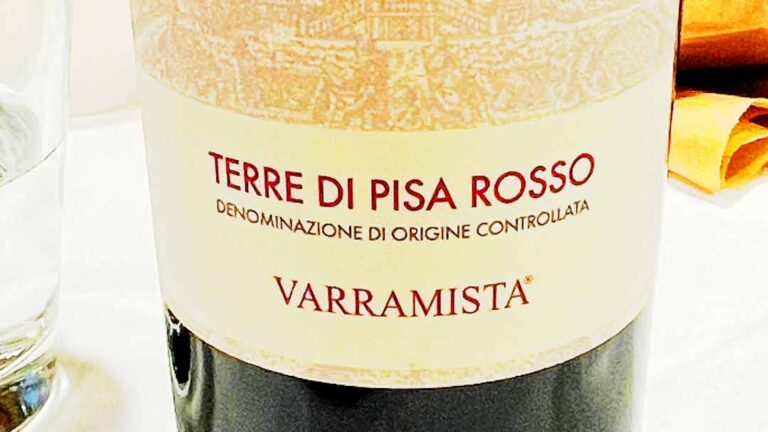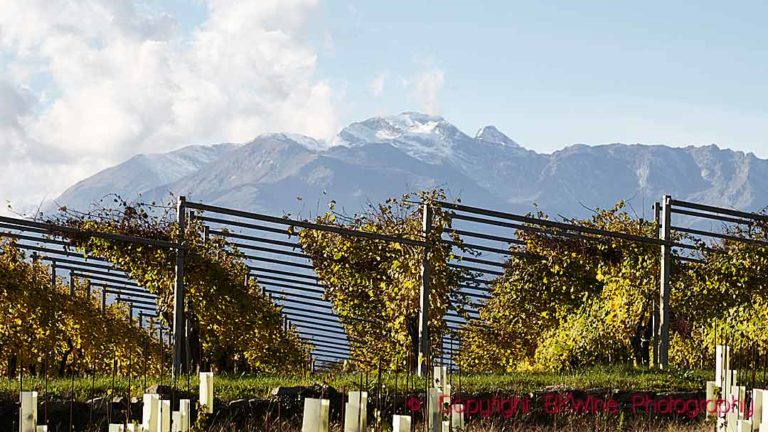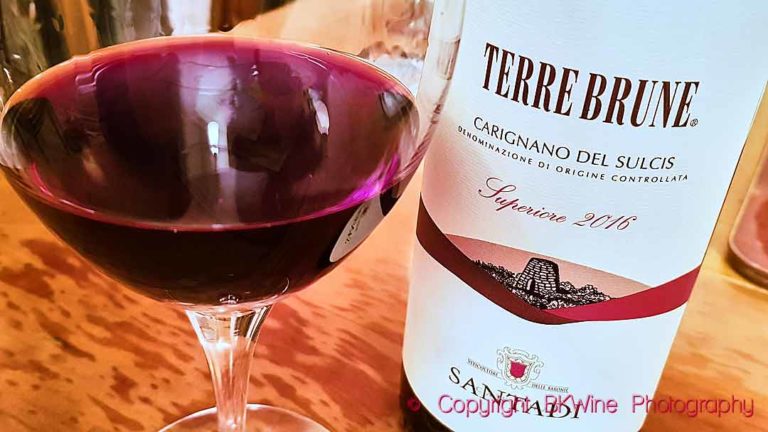An ambitious oenologist, an experienced wine journalist and about ten craft producers with a common dream. The dream is called Modigliana and is located in Romagna, on the border with Tuscany. Here, the small group makes wines from the sangiovese grape that taste like no other in Italy. Together they have created the organization Stella dell’Appennino, Star of the Apennines. The Modigliana dream is becoming an interesting reality and is aiming for the stars. BKWine Magazine’s Åsa Johansson tells the story.
“I had to leave. My parents were honest people but at home it was not allowed to dream. You should keep a low profile and be happy with what you had, but I had such big dreams,” says Renzo Morresi from the farm La Casetta dei Frati. He is a handsome older gentleman who talks about his life, about growing up in the mountain village of Modigliana on the border with Tuscany and how he went to the United States to study as a young man in the 1970s.
“Imagine, me from the mountain village of Modigliana at college in the US with a bunch of hippies,” he says, laughing.
Zuppa inglese
We are sitting around a large table and have just finished a hearty lunch, just as you would expect in food-loving Romagna. A robust lady walks back and forth to the kitchen and each time she comes out she carries a steaming deliciously fragrant dish full of goodies. Tagliatelle with meat sauce. Grilled bread with different fillings. A home-baked cake soaked in liqueur which, funnily enough, is called “zuppa inglese”. On the table are a lot of bottles of sangiovese from the producers in Modigliana. Wine is poured, discussed, there are jokes and laughs and it is apparent that the mixed crowd of people enjoy being together.
Renzo Morresi, realised his dream after studying in the USA and became a lawyer. Now in the fall of his age, he makes wine on the family farm in Modigliana. He is not alone in wanting to take the wines from Modigliana one step further. On the other side of the table sit the young brothers Paolo and Aldo Rametta, who worked in the financial world and in 2020 took over the farm Ronco di Castelluccio.
Here sits also one of Italy’s most well-known wine writers, Giorgio Melandri, who today makes wine on his farm Mutiliana. Over the years, Giorgio has tasted and written about thousands of wines for the Italian wine guide Gambero Rosso. It was he who understood the potential Modigliana had. The fruit, the saltiness and the floweriness. Wines that are austere and generous at the same time. Wines made for sangiovese lovers. Melandri is one of the area’s driving forces together with oenologist and agronomist Francesco Bordini. The latter is a tall, thin man in his forties who, in addition to working as a consultant, also runs the family farm Villa Papiano.
Romagna and Romagna Sangiovese DOC
Romagna is the eastern part of the Emilia Romagna region, north of Tuscany. Romagna is best known for its coast and its seaside resorts, such as Rimini where tourists have been making pilgrimages for decades. Wine has always been in the limelight, largely due to the large cooperatives that made large quantities of wine that were sold at low prices in bulk. Even today, they account for 75 percent of the region’s production.
The area of the Romagna Sangiovese DOC lies east of Bologna and stretches north of the Apennines up to the Via Emilia. In 2019 the DOC region had 6235 hectares but most of the wine was bottled as IGT wines or table wines. Only 29 percent was bottled as Romagna Sangiovese DOC. The total DOC production is approximately 16 million bottles. In 2011, the region was divided into sub-zones with the help of cartographer Alessandro Masnaghetti. Modigliana is the most ambitious of the sub-zones and is working to create a new future for the wines of Romagna.
“There has been a generational change in Romagna, the younger ones do not have the same inferiority complex vis-à-vis Tuscany and they dare to invest in making wines driven by terroir. Positive today is also that a new niche of consumers understands that fruit-driven wines with careful oak barrel aging are not equivalent to lower quality,” says Francesco Bordini.
Modigliana actually belonged to Tuscany until 1923. It was Benito Mussolini who redrew the map and made the municipality part of Emilia Romagna. He came from the village of Predappio, a stone’s throw from Modigliana. He rebuilt his home village, instead of dilapidated simple houses, large impressive buildings were built in fascist style. He also took the opportunity to build himself a summer palace and his own burial place.
Hills and fields
For two days I travel around with Francesco Bordini and visit Romagna and Modigliana. We ride up and down hills, through vineyards and blooming fields, every now and then Bordini stops and takes a handful of soil and tells me about Romagna’s different soils, climates and conditions. It’s a torrent of information that only gets a break when we sit down to eat tortellini with wild herbs and parmesan cheese at a local trattoria. Energy is seething and I think Bordini might be cloned. He probably has to have three sets of himself in the closet to keep up with everything he does.
In the evening we go to Giorgio Melandri’s home in Faenza. It’s a beautiful little town. The area is well known around the world for its production of mechanical components, motorcycles and porcelain. In the city centre is a beautiful porcelain museum that was completely destroyed during the Second World War. The then director had no money but dreamed of rebuilding the museum. He plucked up courage and wrote to Pablo Picasso asking for help. In response, Picasso sent some of his own works and it was around these that the museum slowly came back to life.
At Melandri’s home, in his elegant bohemian apartment where art fills the walls and the shelves are jam-packed with books, we sample wine from Modigliana in the kitchen. Jazz music is heard in the background, which is occasionally drowned out by one of Giorgio’s children who come in and want to ask or tell something.
And three valleys
“Modigliana consists of three valleys where the vineyards are over 300 meters above sea level. Eighty percent of the area is still forest, which helps retain moisture and cool the air. Sea breezes from the Adriatic also help to keep temperatures down along with the high altitudes,” says Francesco Bordini.
Acerreta valley
The Acerreta valley is the one most similar to Tuscany. Here the hills are soft and they stretch down to the neighbouring municipality of Brisighella. On the plains, a sea breeze blows in from the sea during the summers, which helps keep moisture away. The soil consists of marl and sandstone and a small amount of clay. The wines produced here have fruity characteristics, great juiciness and dense tannins and have excellent aging potential.
Ronco del Castelluccio, Buco del Prete, 2020
Cherries, violets, juicy with elegant ripe tannins, lively acidity, tight but at the same time light and with depth.
Ronco dei Ciliegi, 2020
Dull, subdued aromas, berry and floral with sweet fruit, integrated tannins and a savoury finish with lots of saltiness.
Multiliana 2018, Cerreta
Complex aromas of leather, sage and incense, cherry and tangerine, earthy tones with dense integrated tannins, flavourful and intense.
Tramazzo valley
Valle Tramazzo is the most central and inhabited. It is long and wide and here there is less temperature difference between day and night, although the valley is more exposed to winds than the others. Here, the forest gives way to other crops, above all kiwi. The wines that come from here have characteristic balsamic notes and great finesse in both aromas and taste.
LU.VA, Il Carbonaro, 2020
Loads of red cherries with peppery notes, simple presentation with rustic tannins wrapped in fruit and lively acidity.
Casetta dei Frati, Framónte, 2019
Blue plum, flowers and blood orange, resilient tannins and fruit mixed with tight saltiness. Elegant and balanced generous.
Mutiliana, Tramazzo 2018
Lots of herbs on the nose, sage, rosemary, mint and eucalyptus wrapped in berry notes and subdued cherry, on the palate lots of fruit, straight-backed ripe tannins that offset juiciness and the generous appearance.
Ibola valley
The fascinating Ibòla valley is narrow and deep like a canyon with a lot of forest. It is a closed valley that is cooler in the lower part and more temperate in the upper part. Spring comes slowly here. The Ibòla valley is characterized by large temperature differences between day and night. The soil consists almost exclusively of sandstone. The wines from here are fresh and spicy and retain a lively acidity even in warm years.
Il Teatro, La Roncia, 2020
Ripe aromas with acidic cherries, cloves, ripe tannins wrapped in fruit and lifted by a fresh acidity, full without feeling tired.
Menta & Rosmarino, Area 8, 2020
Sweet fruit on the nose with hints of light spiciness, in the mouth fluffy and fruit driven with light ripe tannins, easy to drink and energetic.
Mutiliana, Ibbola, 2018
Complex aromas with dark tones, leather and spice that wraps in earthy notes and fruitiness, taut tannins balanced by taut elegant fruit and saltiness. Nuanced long finish.
Villa Papiano, Vigna Papesse, 2020
Vibrant fruitiness with slightly herbal notes, juicy in the mouth with tight ripe tannins and elegant acidity that prolongs the intense flavors.
Villa Papiano, Vigna Probi, Reserve, 2018
Violet, leather, wild herbs in the aroma, on the palate ripe fruit is mixed with tight well-integrated tannins, a wine that plays on many strings at the same time, a nuanced finish where saltiness, herbs and berries mix with each other.
The wines from Modigliana convince more and more and are an interesting new acquaintance for all sangiovese lovers. The dream of Modigliana is today an exuberant reality.













